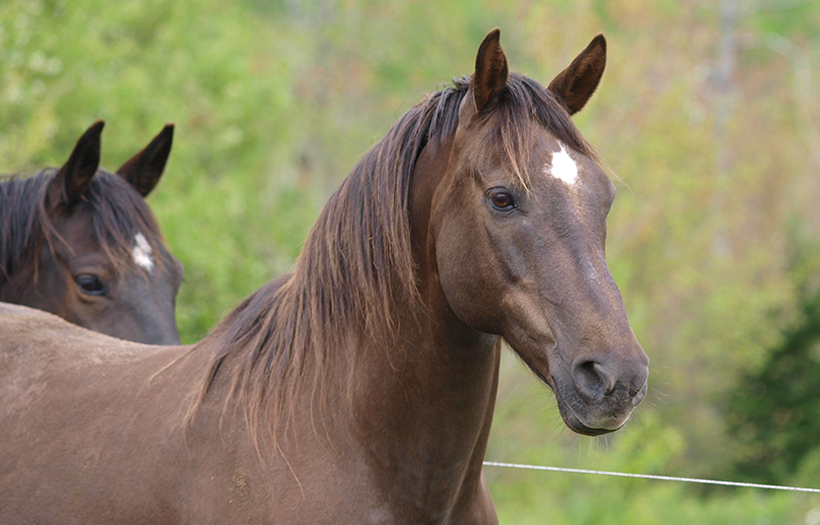Quality and Safety Taste so Much Better

Looking through the feed bag, there is barley, corn, molasses. Even the protein content on the tag seems adequate. This feed may have been developed for milk production in cows but, regardless, it seems to have all of the ingredients of a horse feed, and at a much better price! Let’s buy it. My horse certainly won’t be any worse off…Wrong! In the short or long term, the money saved by buying livestock feed or a low-end horse feed will have been a false economy. Here are the main reasons why.
Far too many horse breeders and owners still give their horses livestock feed, either as a matter of convenience or to save money, since livestock products being generally less expensive and, also non-taxable. Nutritionally, this practice is far from recommended, since livestock and horses are not comparable from a metabolic and digestive standpoint, and their dietary requirements differ greatly.
VERY DIFFERENT NUTRITIONAL REQUIREMENTS
It is true that, at first glance, livestock and horse feeds may appear similar; in reality, the only similarity between the two bags is the common grain they contain, which on closer examination are not necessarily of the same value. The ingredients that are used, the balance of nutrients, and the concentration of these nutrients differ significantly from one bag to the other, just as the nutritional content of a bag of cat food differs from that of a bag of dog food. Other than the fact that physiologically the horse’s digestive tract is very different from that of a cow, and that each works quite differently, the dietary needs of horses are unique and driven by the use we make of the horse.
Unlike livestock, which often are only expected to gain weight or produce milk, we ask the horse to perform as an athlete, which notably increases its need for the vitamin B complex and vitamin E, nutrients that are generally missing from livestock feed. Also, it should be noted that horse feeds contain higher concentrations of certain minerals than livestock feeds do, which means that the latter will not meet the needs of horses.
Regarding fats, even if the percentage is similar between horse feeds and livestock feeds, the source of the fats used is not necessarily the same. Without going into detail, it is important to know that certain fat sources, for instance, animal fat, are not assimilated as well by horses, and are also less palatable to them.
At first glance, the percentage of proteins in dairy cattle feed may also seem adequate for horses. Yet, much of this protein is derived from urea, a substance that is poorly absorbed by horses and can even become toxic to them. Consequently, the proteins and amino acids supplied by livestock feed are not balanced for the needs of a horse.
POISONED RATION
Feeding one’s horses livestock feed is not ideal nutritionally, but the most alarming remains the risk of poisoning from the different antibiotics that are sometimes used in feed made for other farm animals. The best known are Monensin sodium, Lasalocid sodium and Ractopamine, three drugs frequently used in dairy and beef cattle feed to stimulate their growth. Ingestion of even the tiniest amount of these extremely toxic drugs can be fatal to a horse in the space of 12 hours. Ingredients should be closely evaluated.
If you use a feed formulated especially for horses and therefore believe yourself to be safe from these drugs, think again! Ask yourself whether your feed manufacturer makes the horse feed immediately after making the cattle, poultry or swine products. If the cleaning conditions are not optimal before the horse feed is mixed, the equipment can contain residual drug amounts and thus contaminate the feed.
Beware also of livestock and other farm animal feed bags recycled as horse feed bags; here again, any residual drugs remaining in the bag could have grave consequences for the horse fed from that bag. Finally, when you buy bulk feed, make sure that your supplier has taken every precaution to avoid any contamination during transport of these different products. Most feed mills or feed manufacturers are aware of the risks associated with antibiotic drugs, but some are more vigilant than others. The key is knowing how to tell them apart. Don’t hesitate to ask your supplier what biosecurity measures he takes to guarantee the quality and safety of his products. Purina Canada equine feeds are made in a medication free plant.
